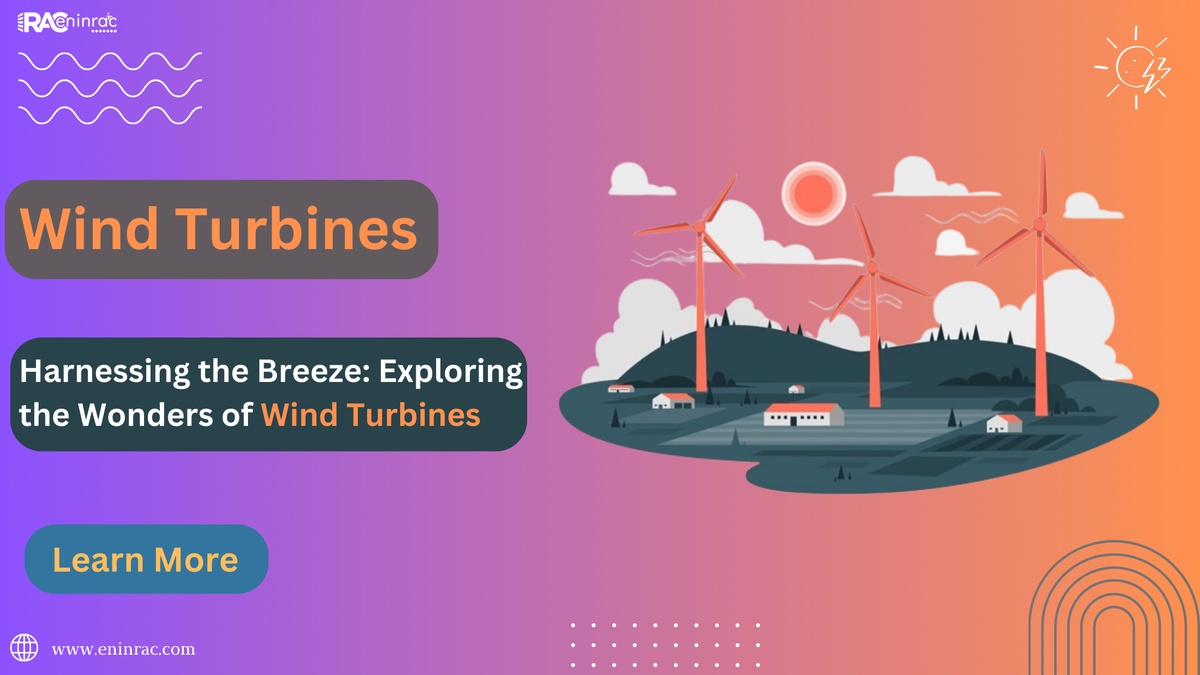In the pursuit of sustainable energy solutions, wind turbines stand tall as iconic symbols of innovation and progress. These towering structures harness the power of the wind to generate clean, renewable electricity, offering a beacon of hope in the fight against climate change and fossil fuel dependency. In this blog, we embark on a journey to unravel the intricacies of wind turbines, delving into their history, technology, benefits, and future prospects.
A Glimpse into the Past: The Evolution of Wind Power
The concept of wind power dates back centuries, with early civilizations utilizing windmills for tasks such as milling grain and pumping water. However, it wasn’t until the late 19th and early 20th centuries that wind turbines began to emerge as electricity-generating machines. Pioneering engineers like Charles F. Brush and Poul la Cour laid the groundwork for modern wind turbine technology, paving the way for the wind energy revolution we witness today.
The Anatomy of a Wind Turbine How It Works
At the heart of every wind turbine lies a simple yet sophisticated mechanism for capturing and converting wind energy into usable electricity. The basic components include:
Rotor Blades: Aerodynamically designed blades capture the kinetic energy of the wind as they rotate.
Hub: The hub connects the blades to the main shaft, allowing for rotational movement.
Generator: The rotational energy is transmitted to a generator, where it is converted into electrical power.
Tower: The tower provides structural support for the turbine and elevates the rotor blades to harness higher wind speeds.
Nacelle: Housed atop the tower, the nacelle contains the gearbox, generator, and other critical components.
As the wind flows over the rotor blades, it creates lift, causing them to rotate. This rotational motion drives the generator, producing electricity that can be transmitted to the grid or stored for later use.
Benefits of Wind Turbines: Driving Sustainability and Economic Growth
Wind turbines offer a myriad of benefits that make them an attractive option for clean energy generation:
Renewable and Clean: Wind energy is abundant, inexhaustible, and emits no greenhouse gases or air pollutants during operation, mitigating the environmental impacts associated with fossil fuels.
Energy Independence: Harnessing wind power reduces reliance on imported fossil fuels, enhancing energy security and resilience.
Job Creation: The wind energy sector provides opportunities for employment across various stages of development, from manufacturing and installation to operations and maintenance.
Economic Development: Wind projects stimulate local economies through investments, tax revenue, and land lease payments, revitalizing rural communities and driving infrastructure development.
Diversification of Energy Portfolio: Integrating wind power into the energy mix diversifies sources of electricity generation, reducing vulnerability to fuel price fluctuations and supply disruptions.
Challenges and Future Outlook
While wind turbines offer significant advantages, they also face certain challenges that warrant attention:
Intermittency: Wind energy is inherently variable and dependent on weather conditions, requiring complementary solutions such as energy storage and grid flexibility to ensure reliable power supply.
Land Use and Aesthetics: Large-scale wind farms may encounter opposition due to concerns about visual impact, noise, and potential effects on wildlife and habitats.
Technological Innovation: Continued advancements in turbine design, materials, and efficiency are essential for driving down costs and increasing competitiveness in the energy market.
Policy and Regulatory Support: Supportive policies, incentives, and regulatory frameworks are critical for fostering investment in wind energy and overcoming barriers to deployment.
Despite these challenges, the future of wind energy looks promising. Rapid technological advancements, declining costs, and growing public awareness of the need for clean energy solutions are driving increased adoption of wind power worldwide.
Conclusion:
Embracing the Winds of Change Wind turbines represent more than just towering structures dotting the landscape; they embody the promise of a sustainable future powered by clean, renewable energy. As we navigate the transition towards a low-carbon economy, wind power will continue to play a pivotal role in reducing emissions, mitigating climate change, and fostering economic growth. By harnessing the breeze and embracing the winds of change, we can propel ourselves towards a brighter, greener tomorrow — one where clean energy powers communities, economies, and aspirations alike.
More market research, advisory consulting services to discover
At Eninrac, we offer a wide range of, advisory consulting solutions, from We put ‘search’ in research to help expand your business with ease. Discover all the possibilities now.


No comments yet